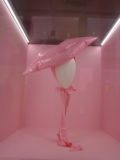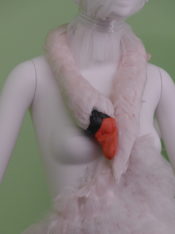Dear Shaded Viewers,
This is not about who wore what, you’ve already seen that everywhere on the press. Miguel Villalobos takes us through Camp: Notes on Fashion which opens to the public at The Met May 9 – September 8th and explores the origins of camp’s exuberant aesthetic and how the sensibility evolved from the margins to be an important influence to the mainstream.
Susan Sontag’s 1964 essay “Notes on ‘Camp’” provides the framework for the exhibition, which examines how fashion designers have used their métier as a vehicle to engage with camp in a myriad of compelling, humorous, and sometimes incongruous ways.
The exhibition is made possible by Gucci. Additional support is provided by Condé Nast.
“Camp’s disruptive nature and subversion of modern aesthetic values has often been trivialized, but this exhibition reveals that it has had a profound influence on both high art and popular culture,” said Max Hollein, Director of The Met. “By tracing its evolution and highlighting its defining elements, the show embodies the ironic sensibilities of this audacious style, challenges conventional understandings of beauty and taste, and establishes the critical role that this important genre has played in the history of art and fashion.”
The Met Gala is The Costume Institute’s main source of annual funding for exhibitions, publications, acquisitions, and capital improvements.
“Fashion is the most overt and enduring conduit of the camp aesthetic,” said Andrew Bolton, Wendy Yu Curator in Charge of The Costume Institute. “Effectively illustrating Sontag’s ‘Notes on “Camp,”’ the exhibition advances creative and critical dialogue about the ongoing and ever-evolving impact of camp on fashion.”
The exhibition features approximately 250 objects including drawings dating from the 17th century to present. The show’s opening positions Versailles as a “camp Eden” and address the concept of se camper—“to posture boldly”—in the royal courts of Louis XIV and Louis XV. It then focuses on the figure of the dandy as a “camp ideal” and traces camp’s origins to the queer subcultures of Europe and America in the late 19th and early 20th centuries. In her essay, Sontag defined camp as an aesthetic and outlined its primary characteristics. The second section of the exhibition is devoted to how these elements—which include irony, humor, parody, pastiche, artifice, theatricality, and exaggeration—are expressed in fashion.













































